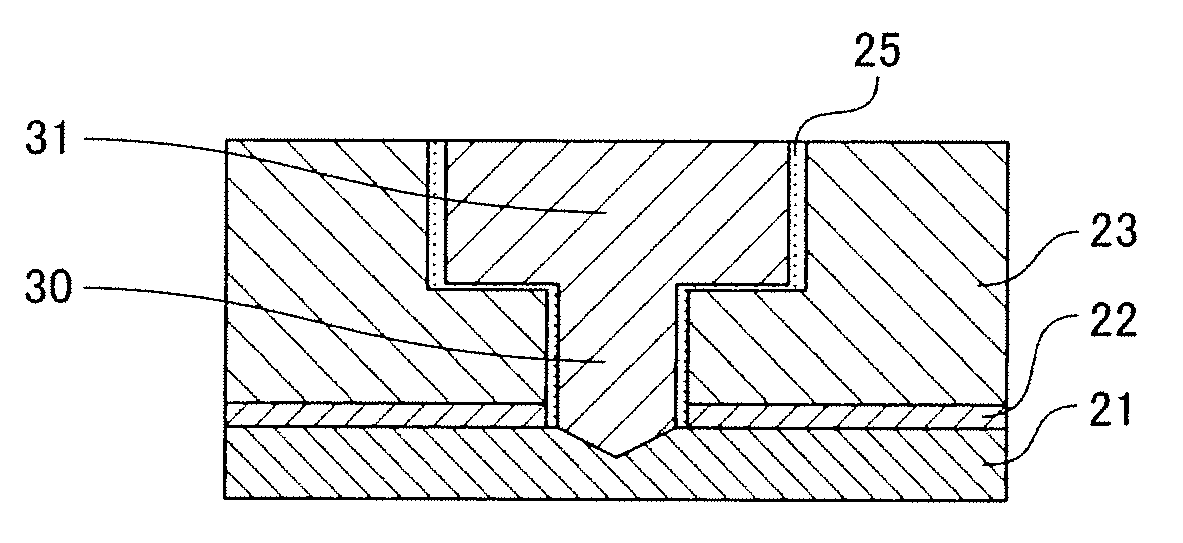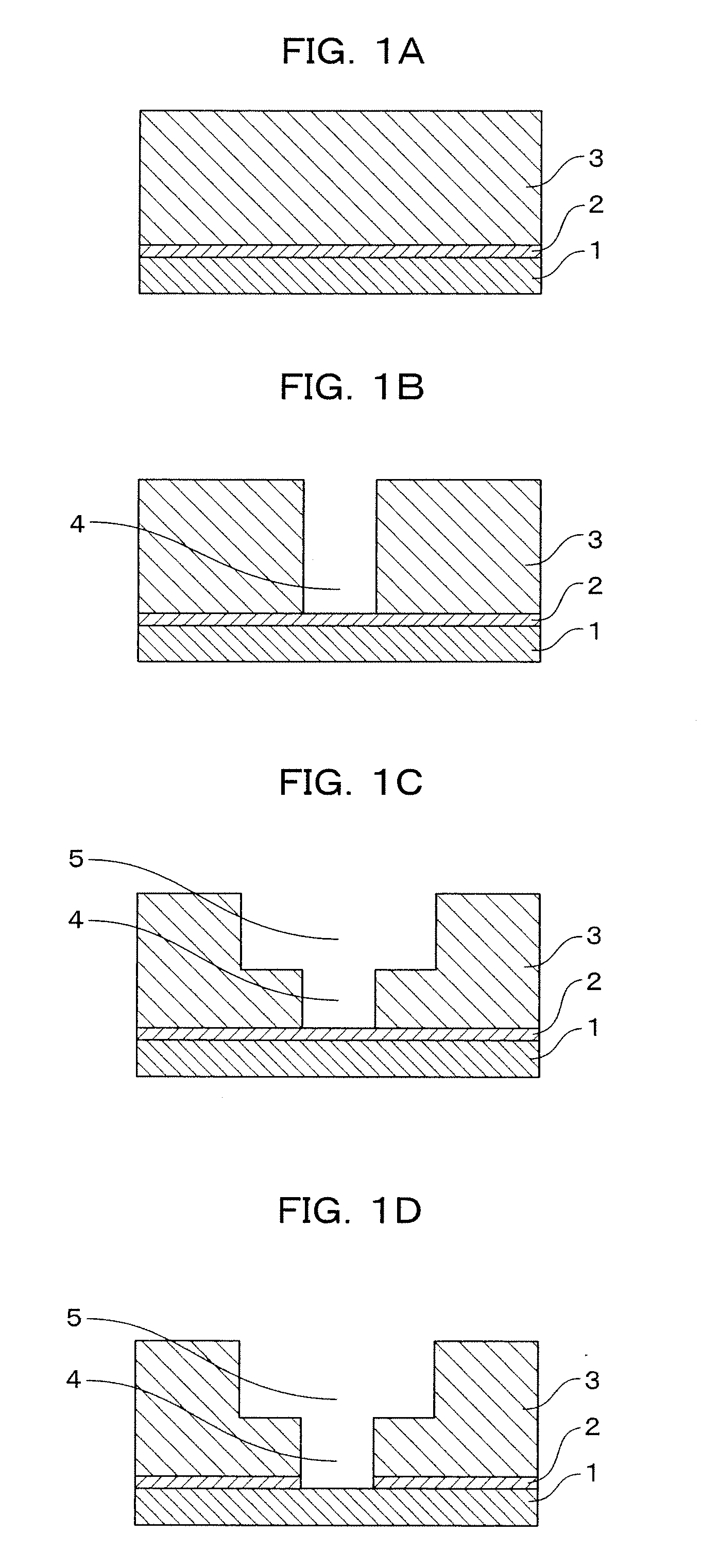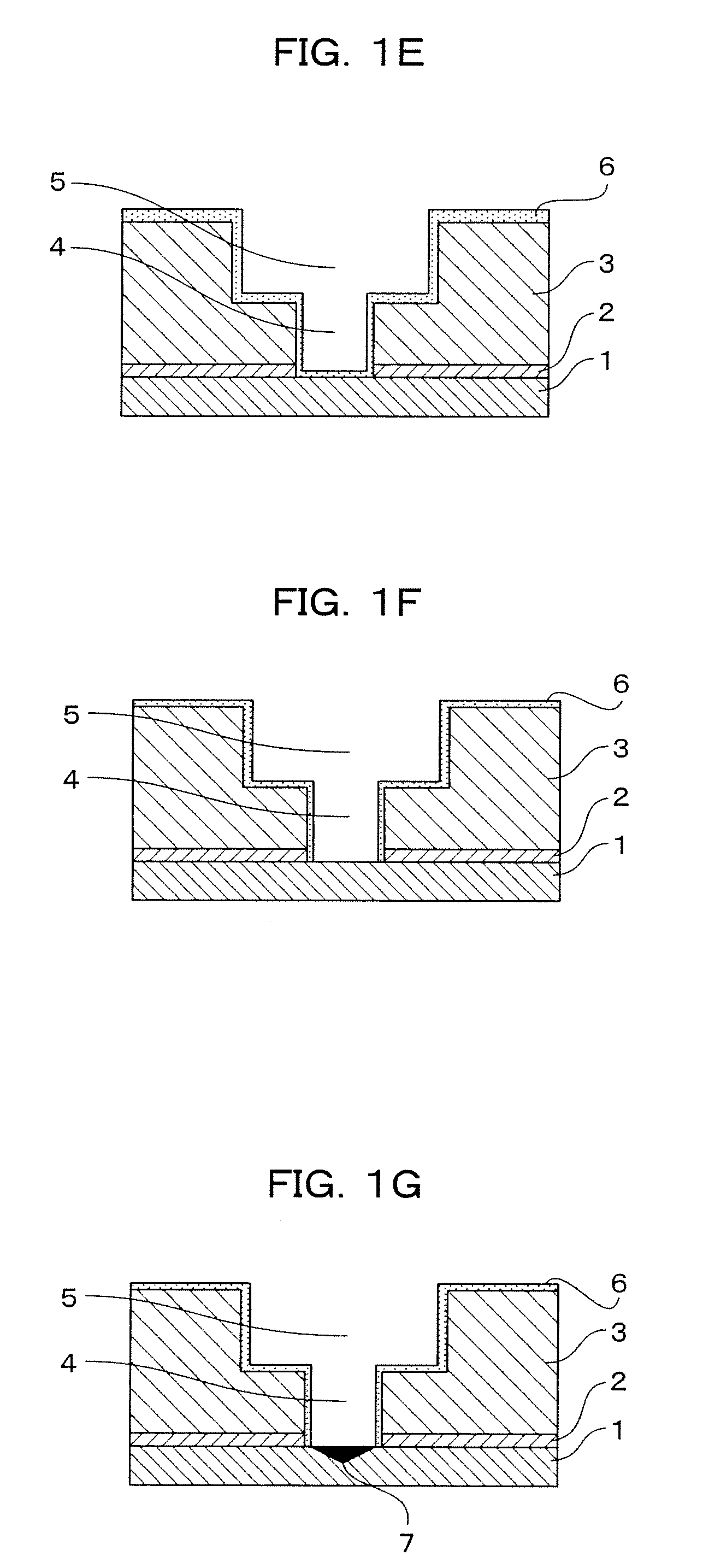Method of manufacturing semiconductor device
a manufacturing method and semiconductor technology, applied in semiconductor/solid-state device manufacturing, basic electric elements, electric devices, etc., can solve the problems of degrading em characteristic of the upper wiring and cannot meet the demand, and achieve the effect of reducing the roughness of the surface, enhancing em resistance, and reducing the resistance of vias
- Summary
- Abstract
- Description
- Claims
- Application Information
AI Technical Summary
Benefits of technology
Problems solved by technology
Method used
Image
Examples
embodiment 1
[0064]A method of manufacturing a semiconductor device according to Embodiment 1 of the present invention will be described below with reference to FIGS. 1A to 1J. FIGS. 1A to 1J are sectional views showing steps of the method of manufacturing the semiconductor device according to Embodiment 1 of the present invention.
[0065]First, as shown in FIG. 1A, lower wiring 1 is formed on a semiconductor substrate with an element such as a transistor formed thereon. Then, an insulating barrier film 2 is formed on the lower wiring 1 by a CVD method. SiCO or SiCN is used as the insulating barrier film 2. Subsequently, an interlayer insulating film 3 is formed on the insulating barrier film 2 by a CVD method. A carbon-containing silicon oxide film (SiOC film) is used as the interlayer insulating film 3.
[0066]Then, as shown in FIG. 1B, a photo resist having a via pattern is deposited on the interlayer insulating film 3 by a photolithography method. The interlayer insulating film 3 is subsequently...
embodiment 2
[0083]A method of manufacturing a semiconductor device according to Embodiment 2 of the present invention will be described below with reference to FIGS. 2A to 2J. FIGS. 2A to 2J are sectional views showing steps of the method of manufacturing the semiconductor device according to Embodiment 2 of the present invention.
[0084]First, as shown in FIG. 2A, lower wiring 21 is formed on a semiconductor substrate with an element such as a transistor formed thereon. Then, an insulating barrier film 22 is formed on the lower wiring 21 by a CVD method. SiCO or SiCN is used as the insulating barrier film 22. Subsequently, an interlayer insulating film 23 is formed on the insulating barrier film 22 by a CVD method. A carbon-containing silicon oxide film (SiOC film) is used as the interlayer insulating film 23.
[0085]Then, as shown in FIG. 2B, a photo resist having a trench pattern is deposited on the interlayer insulating film 23 by a photolithography method. The interlayer insulating film 23 is ...
PUM
| Property | Measurement | Unit |
|---|---|---|
| thickness | aaaaa | aaaaa |
| bias power | aaaaa | aaaaa |
| bias power | aaaaa | aaaaa |
Abstract
Description
Claims
Application Information
 Login to View More
Login to View More - R&D
- Intellectual Property
- Life Sciences
- Materials
- Tech Scout
- Unparalleled Data Quality
- Higher Quality Content
- 60% Fewer Hallucinations
Browse by: Latest US Patents, China's latest patents, Technical Efficacy Thesaurus, Application Domain, Technology Topic, Popular Technical Reports.
© 2025 PatSnap. All rights reserved.Legal|Privacy policy|Modern Slavery Act Transparency Statement|Sitemap|About US| Contact US: help@patsnap.com



